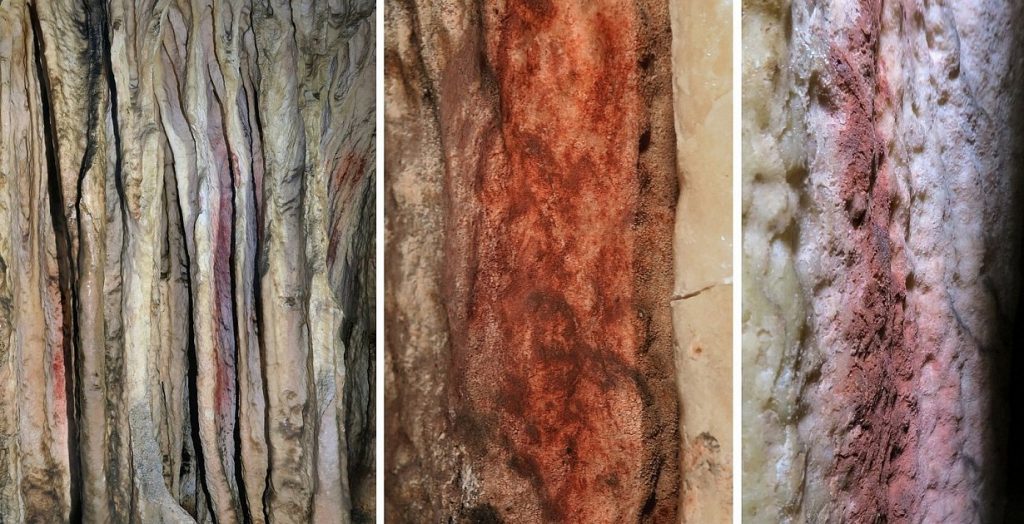Washington/Malaga. A research team has found more evidence that Neanderthals had artistic talent, contrary to what had long been assumed. In an article in “Proceedings” of the American Academy of Sciences (PNAS) It is clear that they attribute the drawing of stalagmites in a cave in southern Spain to relatives of modern humans.
The assumption that Neanderthals could have been the originators of cave art in Ardáles in southern Spain was first expressed in 2018 and sparked discussions. Investigations of layers of paint on the rock figures have dated them to more than 64,800 years. At that time, modern man did not yet live in Europe and was an author out of the question. Other scientific work later stated, however, that the natural origin of the paint layers could not be ruled out. Cueva de Ardales is one of the most prominent rock-painting caves on the Spanish Peninsula. It collects a collection of paintings from the Upper Paleolithic, most of which date back to 20,000 BC. There are many illustrations of animals that resemble deer, horses, and goats as well as symbols.
The team surrounding Francesco D’Erico of Purdue University sees other, much older approaches to painting and attribute them to Neanderthals. “These are ocher pigments that were probably brought into the cave,” Dr. Erico Beth of the National Center for Scientific Research in Paris was quoted as saying. Analyzes showed that painted stalagmites had different types of color pigments that were applied at different times. This “supports the hypothesis that Neanderthals came several times, over several millennia, to mark this cave with pigments,” explains Dr. Erico.
Patterns on deer bones as decoration
The art of stalagmites from Neanderthals can only be compared to a limited extent with cave paintings of modern humans, which have been found in many places, especially in France today. “This may not be exactly what one might call art,” the researcher admits. But it is definitely a kind of “symbolic action”.
Also in early July the search results were From the University of Göttingen proves the creativity of Neanderthals. Accordingly, the patterns on the bones of deer more than 50,000 years old turned out to be decorations. A giant deer’s foot bone was probably first boiled in order to engrave the pattern on the surface of the soft bone using stone tools.
Previously, Neanderthal jewelry pieces were not dated more than 40,000 years ago. For this reason, many researchers considered it a tradition, because by that time modern humans had already spread to parts of Europe. But it is clear that Neanderthals also had creative powers of their own.(apa/est)

“Food practitioner. Bacon guru. Infuriatingly humble zombie enthusiast. Total student.”








More Stories
Kyiv: Russian Kursk offensive halted
US Presidential Election: Former US Government Officials Warn Against Donald Trump's Election
Netherlands wants to leave asylum system